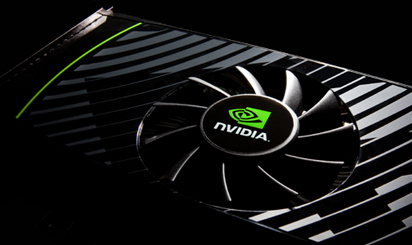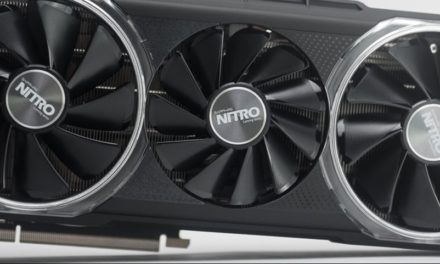
We tried what we haven't yet: GTX 680 SLI, GTX 670
ASUS GTX 680 (GTX680-2GD5)

This is the ASUS reference model, practically a redesigned NVIDIA product, which is why we are only talking about a few words about it. Based on the black printed circuit board, the refmodel is 25,6 cm long, 11 cm wide and 3,7 cm thick together with the cooling, these are a bit friendlier numbers, and accordingly it is easier to place. The factory cooling does its job well, and since the GTX 680 is no longer as hot-headed as the GTX 580 was, it’s also a little quieter.

Obviously, with a special cooler like the 2,5-slot DirectCU II, you can’t compete, but remember that this is a refmodel! The interface is also PCI Express 3.0, the dual SLI connector is present. The card takes up 2 slots, a DisplayPort next to the ventilation grille, and HDMI 1.4a and two DVI receivers for work output. Because it's a refCard, the clocks also work on the factory recommendation, with the GPU ticking accordingly at 1006 MHz (Boost Clock: 1058 MHz), while the 256GB GDDR2 running on the 5-bit bus runs at 6008 MHz.
ASUS GTX 670 TOP (GTX670-DC2T-2GD5) buy cheap online

The card is based on a black, custom printed circuit board, in other words, ASUS 'own design. The PCB is 27 cm long, 13 cm wide and 4,3 cm high with cooling, so it is roughly 3 cm shorter and 1,5 cm thinner than the GTX 680 TOP, however, make sure that we can to be installed in our housing (and the motherboard should be properly arranged), and quality power supply is a basic requirement again this time. NVIDIA discloses a minimum 500-watt power supply in the specification, which can be powered by two 6-pin PCI Express connectors into the GTX 670 DirectCU II TOP, with a maximum power of 170 watts. If you already own the PCB, you have your own power supply.
In the case of the GTX 670 TOP, it consists of an 8-phase Digi + VRM system (the voltage regulator is a CHiL 8318 chip that allows limited software control using the appropriate program, the same controller is found on the GTX 680 TOP). This is the already traditional Super Alloy Power from ASUS, which according to the factory description is 15% higher than the reference (during overdrive, the Super Hybrid Engine as a smart controller, switches in real time between high and low intensity power profiles, and up to 15 percent performance increase), two and a half times longer life (Super Alloy capacitors increase card life to 150 hours - two and a half times more than conventional capacitors), and 35 degree lower operating temperatures (Super Alloy components are special reinforced with alloy at high temperatures and pressures to ensure stable, noise-free operation).

Whether this is exactly the case for a percentage is not known, but it is certain that the Super Alloy Power VRM is made up of quality components, be it a capacitor, spaces or a FET, not only for base clock operation, but for good tuning potential. also promises, after all, the 3-year manufacturer's warranty cannot be accidental either. So the GK104 GPU has a great backcountry, a hotbed, and cooling is still done by a DirectCU II unit, but not the same as the one seen on the GTX 680. Of course, the essentials are the same in the essentials, here too the copper heat pipes are in direct contact with the surface of the GPU, but this rib system is slightly smaller, it only takes up two card slots, which is a bit easier in terms of installation and space requirements. Thick, nickel-plated copper heat pipes are also positioned differently, running out from under the rib at the top of the card and showing their strength. The output range is the same as the GTX 680, meaning we get an HDMI and a DisplayPort in addition to the 2 DVIs.

Whether this is exactly the case for a percentage is not known, but it is certain that the Super Alloy Power VRM is made up of quality components, be it a capacitor, spaces or a FET, not only for base clock operation, but for good tuning potential. also promises, after all, the 3-year manufacturer's warranty cannot be accidental either. So the GK104 GPU has a great backcountry, a hotbed, and cooling is still done by a DirectCU II unit, but not the same as the one seen on the GTX 680. Of course, the essentials are the same in the essentials, here too the copper heat pipes are in direct contact with the surface of the GPU, but this rib system is slightly smaller, it only takes up two card slots, which is a bit easier in terms of installation and space requirements. Thick, nickel-plated copper heat pipes are also positioned differently, running out from under the rib at the top of the card and showing their strength. The output range is the same as the GTX 680, meaning we get an HDMI and a DisplayPort in addition to the 2 DVIs.
Here, too, the hot air is removed by two large, 92 mm, PWM-controlled fans, and we can't complain about the noise level this time either. The “Backplate” seen at the GTX 680 TOP is also present on the back, with protection and cooling functions. We haven't talked about the clocks yet. NVIDIA provides 915/980/6008 MHz (base / boost / RAM) frequencies for the GTX 670, ASUS of course differed significantly for the TOP version. The GPU has been pushed up to 1058 MHz (this is practically the ref boost clock of the GTX 680) so the turbo frequency can reach 1137 MHz! That's right! However, the 2 GB (256 bit) GDDR5 memory has not been overclocked here (as with the GTX 680 TOP), which may be due to the fact that these are Hynix H5GQ2H24AFR-R0C chips that are officially specified at 6 GHz, that is, they theoretically go at 100% even in the present state.
Of course, the ASUS GPU Tweak tuning program can also be used with this model, not only to find out all the details about our controller, but also to monitor its parameters (temperatures, clocks, speed, etc.) and, of course, to tune the card, even by increasing the voltages. . The box and its contents are the same as those seen on the GTX 680 TOP, i.e. in the box with the fresh pattern you will find the standard installation disk and manuals as well as the molex-> PCI Express converter.




















